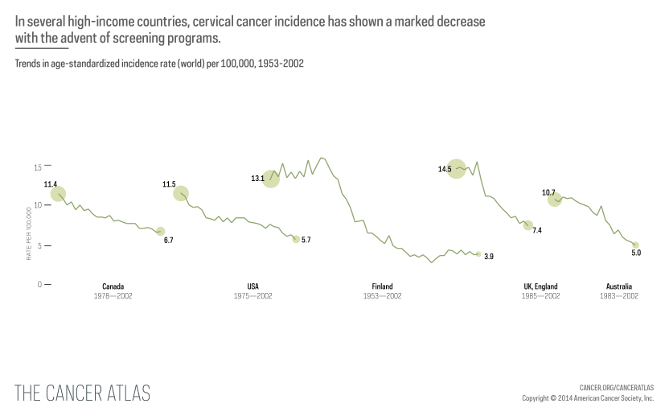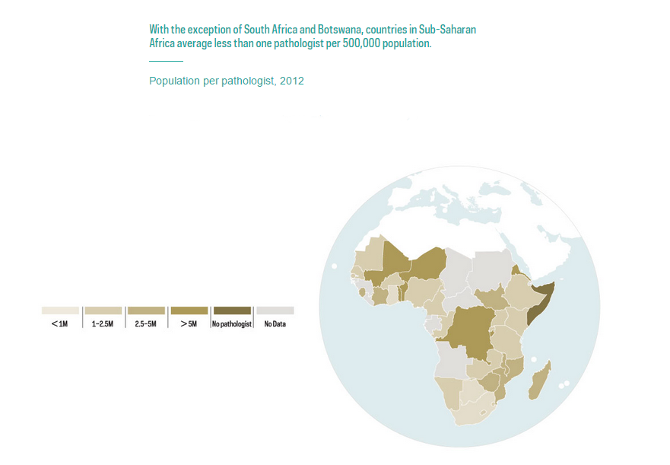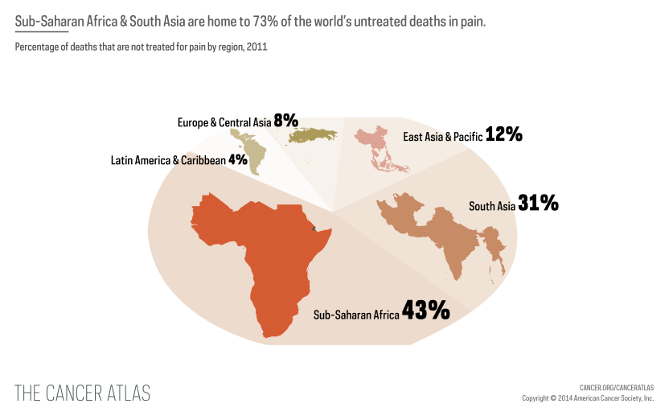Key Insights Into Achieving World Cancer Day’s Four Goals
“Not Beyond Us.” That is the tagline for World Cancer Day this year, which is Wednesday, February 4 – it is meant to promote “a positive and proactive approach to the fight against cancer, highlighting that solutions do exist across the continuum of cancer, and that they are within our reach.”
The goal is to figure out how to implement what is already known to work in the areas of prevention, early detection, treatment and care. The 2015 World Cancer Day campaign is focusing on four areas in particular:
- Choosing healthy lives
- Delivering early detection
- Achieving treatment for all
- Maximizing quality of life
The American Cancer Society’s newly-released Cancer Atlas website and book offers insights into all 4 of these areas. Below is a list of key takeaways in each area from the Cancer Atlas.
Choosing Healthy Lives

- “Tobacco use, the cause of the most preventable cancers worldwide, can be substantially reduced through increased excise tax on cigarettes, smoke-free air laws, restrictions on promotion, and counter-advertising.”
- "Vaccines against hepatitis B virus and human papillomaviruses could reduce the future burden of liver and cervical cancers, respectively, particularly in economically developing countries. Furthermore, transmission of these and some other cancer causing agents (e.g., Schistosoma haematobium, hepatitis C virus) can be prevented by improving hygiene and educating people to modify their high risk behaviors.”
- “Protection from harmful sun exposure reduces the risk of skin cancer.”
- “Instilling healthy behaviors and practices during youth may be easier and more effective than changing entrenched unhealthy behaviors during adulthood.”
Delivering Early Detection

- “Regular screening for cervical, colorectal, and breast cancers detects the disease at an early stage, when the chance for survival and cure is high.”
- “A heightened awareness of warning signs for cancer of the oral cavity, skin, and some other cancers may also lead to detection of cancers at an early stage.”
- “Screening programs for asymptomatic, apparently healthy populations are resource-intensive interventions, and should be undertaken only when their effectiveness has been demonstrated, when health services are adequately developed to investigate, treat and follow up screen-positive individuals, and when there is a sufficiently high incidence of the disease to justify the effort and costs of screening.”
Achieving Treatment for All

- “The cost of cancer care has skyrocketed partly as a result of the development of expensive imaging techniques, radiation therapy equipment, and anticancer agents, including molecularly targeted therapies. As a result, the availability and receipt of treatment has been limited in many parts of the world.”
- “Global scientific approaches and innovation are needed to ensure greater affordability of and access to better value cancer care for all.”
- “Policymakers and several organizations are currently working to expand patient access to therapy and increase the number of trained workforce personnel, although challenges in leveraging existing infrastructure and lowering costs remain.”
Maximizing Quality of Life

- “Pain associated with cancer can be controlled by administration of analgesic drugs.”
- “Opioids are also on almost all national essential medicines lists, but access to them is severely limited in most low- and middle-income countries, where 85% of the world’s population consumes just 7% of the medicinal opioids.”
- “Although morphine, the most effective treatment for severe pain, is safe, effective, plentiful, inexpensive, and easy to use, legal and regulatory restrictions, cultural misperceptions about pain, inadequate training of healthcare providers, a poorly functioning market, generally weak health systems, and concern about diversion, addiction, and abuse create a web of barriers that force millions of people to live and die with treatable pain.”
Explore the Cancer Atlas for more insights into how to address these challenges.
- For researchers
American Cancer Society news stories are copyrighted material and are not intended to be used as press releases. For reprint requests, please see our Content Usage Policy.


